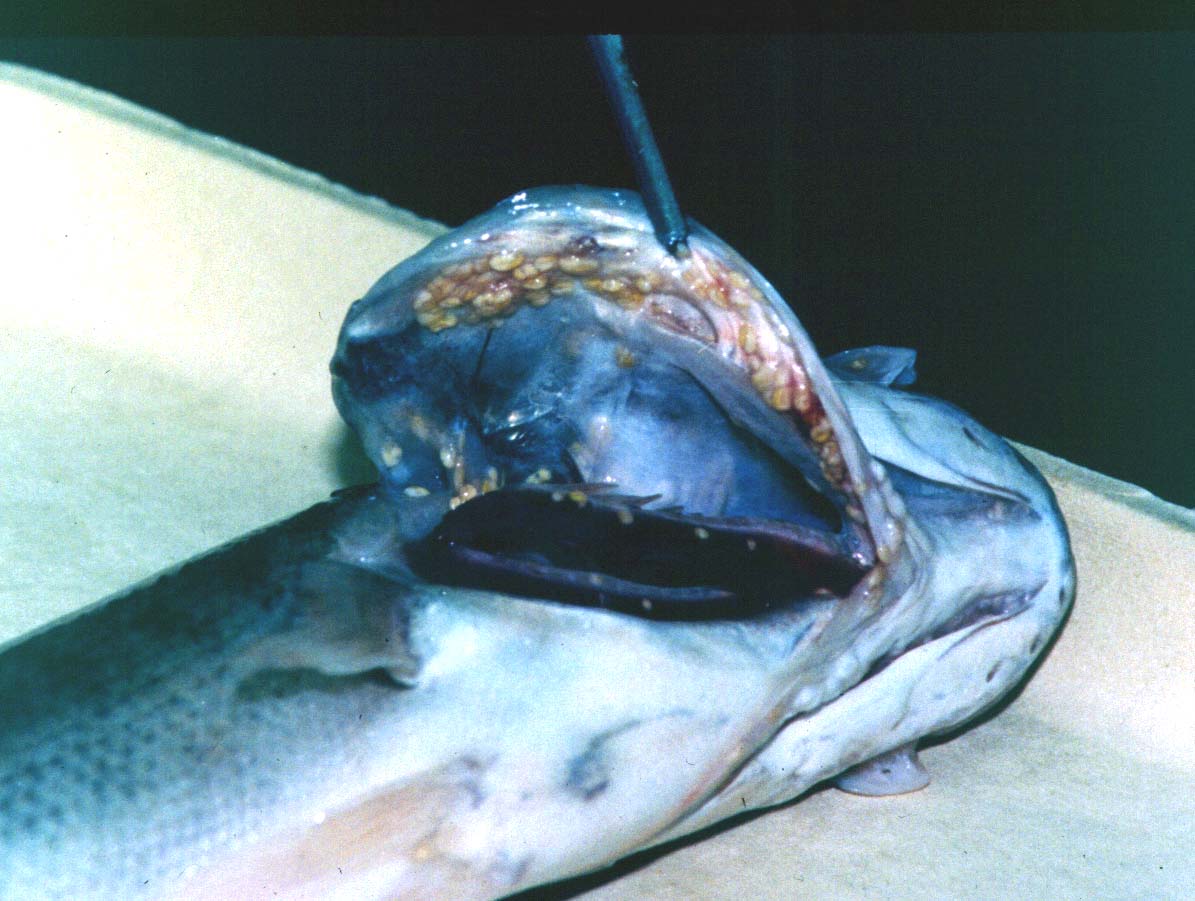

Biology 625
ANIMAL PARASITOLOGY
Supplemental visual material

|
Clinostomum sp. (Strigeiformes: Clinostomidae) "yellow grub disease" in a largemouth bass
Adult clinostomes reside in the mouth and esophagus of reptiles and, especially, fish-eating birds (i.e. herons, bitterns). Eggs are passed in the feces and the miricidia in the water penetrate planorbid snails. Sporocyst and redial generations occur, resulting in the production of cercariae that encyst as metacercariae throughout the body of second intermediate hosts such as fish and amphibia. Because the metacercariae are large and yellowish in appearence, their presence is often termed "yellow grub disease." Fish eating vertebrates acquire infections by ingesting second intermediate hosts containing the metacercariae. Clinostomes are very common in fish and fish-eating birds in Kansas. |
|---|
Original; photograph by Dr. R.D. McKown

Home | Search | What's
New | Help | Comments
Kansas State University | Biology Division